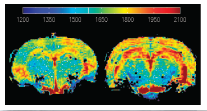Platform Technologies
Intellectual Context
TCIN possesses advanced systems for small-bore preclinical brain imaging, and for human brain imaging. The goal of the Platform technologies thematic focus is use neuroimaging tools in a truly integrative, interdisciplinary manner for the detection, real-time monitoring, and diagnostic prediction of physiological and cognitive states, in a way that has not been successfully achieved elsewhere. Brain imaging research is often conducted separately from other research areas such as molecular and cellular neuroscience. TCIN is unique in bringing these different research strands together in the same building, and aims to build on unique synergies in neural engineering, including neurodiagnostics, neural prostheses, neuromodulation devices and therapeutic electrical stimulation.
Scientific and Societal Impact
Advances in platform technologies lead to the development of specific neurodiagnostic systems of real
clinical benefit for the study of aging, as well as neurological and psychiatric disorders; to the
development of new methods for neurodiagnostics, neural prostheses, neuromodulation devices and
therapeutic electrical stimulation; and to the development of methods for harvesting information from
signals acquired from excitable tissue.
Strategic Research Objectives
Advances in platform technologies have key objectives for functional neuroimaging, decoding brain activity, and for active implantable devices.

In the area of functional neuroimaging, we will:
- Develop new methods for real-time functional brain imaging.
- Develop new methods to image brain function with the highest spatial and temporal resolution possible, especially in combination with EEG.
- Develop new methods to image the functional and structural connectivity of the brain.
In the area of decoding brain activity, we will:
- Improve the ability to decode brain signals across all levels of complexity, i.e. from a single neuron
to the whole brain. - Develop new methods to understand how synaptic activity is integrated to whole brain function.
In the area of active implantable devices, we will:
- Develop new methods to functionally interface to neural tissue giving real time information.
- Develop new methods to stimulate and record neural activity with closed loop control.
- Develop new methods to integrate noninvasive external devices with the brain.
Supporting these developments requires the development of a computational infrastructure for curating data which is increasingly captured at higher frequencies and greater levels of resolution. Such a provision will facilitate data audits and data storage for research publication, and make data more freely available for external collaborative analyses.

